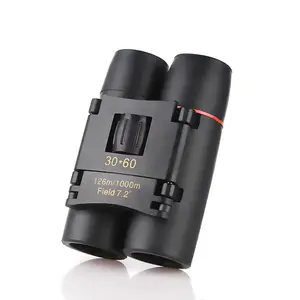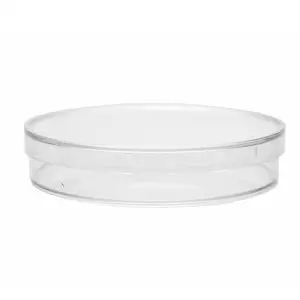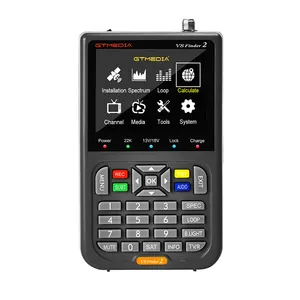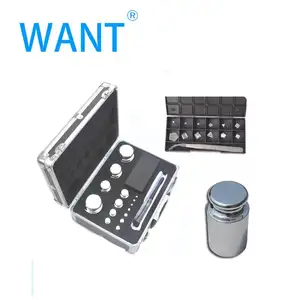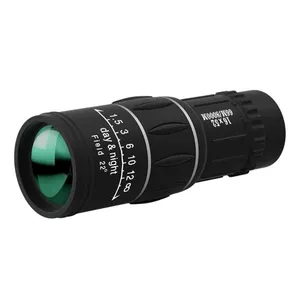Popular in your industry
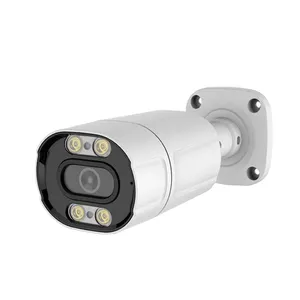




















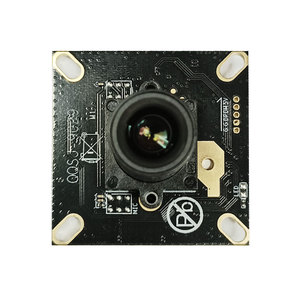






















































About infrared camera 640x480
In the intricate dance of heat and light, infrared cameras play a pivotal role, capturing the unseen symphony of thermal energy that emanates from all objects. As we delve into the world of 640x480 infrared camera solutions, we unlock a new dimension of precision in heat analysis. This advanced resolution marks a significant leap in the clarity and detail of thermal imaging, revolutionizing applications from industrial maintenance to building diagnostics. Join us as we explore the transformative impact of high-resolution infrared cameras and the myriad of ways they are reshaping our understanding and interaction with the thermal world around us.
Understanding Infrared Cameras

Thermal imaging is a powerful technology that captures the heat emitted by objects to create an image, known as a thermal image. This process is facilitated by thermal imaging devices, which detect temperature differences and translate them into a visual representation. Thermal imaging operates on the principle that all objects emit infrared energy as a function of their temperature. By detecting this energy, thermal imaging devices can construct images even in environments without visible light.
Infrared thermal imaging cameras are sophisticated devices that utilize this technology to capture detailed thermal images. These cameras detect infrared radiation and convert it into electronic signals, which are then processed to produce thermal images. The level of detail in these images is highly dependent on the camera's resolution, with higher resolutions providing clearer and more defined images.
The applications of thermal imaging are diverse, ranging from industrial heat analysis to building diagnostics. By revealing temperature anomalies that may indicate issues such as electrical faults, insulation weaknesses, or moisture intrusion, thermal imaging serves as a critical tool for preventative maintenance and quality assurance.
Thermography, a related field, involves the study and application of thermal imaging. It encompasses concepts such as thermal energy, emissivity, and the differences between passive and active thermal imaging. Passive thermal imaging relies on the natural radiation emitted by objects, while active thermal imaging involves applying an external heat source to enhance temperature contrast and detail in the image.
The Significance of 640x480 Resolution
The resolution of a thermal camera is a critical factor that determines the image clarity and detail. A 640x480 resolution in thermal imaging signifies a substantial increase in pixels compared to lower resolutions, which translates to finer detail and improved image quality. This level of resolution provides a more precise and clearer picture, allowing for better detection and analysis of temperature variations and patterns. The increased pixel count inherent in a 640x480 resolution thermal camera means that more thermal data is captured, enabling users to see smaller objects or defects from a greater distance and with better accuracy. This is particularly important in professional settings where the smallest temperature difference can indicate a potential issue or anomaly. With higher resolution, thermal cameras become more powerful tools for a wide range of applications, from industrial heat analysis to medical diagnostics, enhancing their ability to perform detailed inspections and accurate temperature measurements.
Types of Infrared Cameras on Alibaba.com

Alibaba.com showcases a diverse range of infrared cameras, catering to various industrial and commercial needs. Among the assortment, fixed and handheld models are prominent, each serving specific applications. Fixed infrared cameras are integral for continuous monitoring in security and surveillance, while handheld devices offer flexibility for on-site inspections and troubleshooting.
The infrared cameras available on the platform feature varying resolutions, with some boasting high-speed multispectral capabilities, indicative of the advanced technology available. These cameras are designed for precision tasks, including industrial heat analysis and building diagnostics, where detailed thermal imagery is crucial.
For automotive applications, options highlight the integration of infrared technology in vehicle safety systems. Similarly, cameras underlining the role of high-resolution infrared cameras in enhancing night vision capabilities for drivers are also available.
The infrared camera selection is not limited to professional use; there are also consumer-grade devices that make thermal imaging more accessible to a broader audience. These cameras are a testament to the versatility and adaptability of infrared technology across different sectors and use cases.
Fixed vs. Handheld Infrared Cameras
In the realm of infrared temperature measurement, the choice between portable and stationary technology is pivotal. For precise localization of critical areas or specific measurement points, point measuring infrared devices are often employed. These devices are designed to monitor temperatures with high accuracy, which is essential for optimizing processes and preventing quality issues. On the other hand, when multiple critical areas exist or cannot be pinpointed, infrared cameras, particularly those with 640x480 resolution, offer detailed thermal images, allowing for comprehensive monitoring and analysis. The versatility of infrared cameras is further enhanced by their ability to connect to computers, facilitating the examination of high-resolution images and the tracking of temperature fluctuations over time. Whether fixed or handheld, these devices are tailored to meet diverse industrial requirements, with various lens options available to suit different measurement scales and environments.
Applications of High-Resolution Infrared Cameras

High-resolution infrared cameras, particularly those with a 640x480 resolution, are instrumental in various applications where precision in detecting heat variations is crucial. One significant application is in the realm of electrical wiring maintenance. These cameras are adept at identifying hot spots within electrical panels and wiring systems, which are indicative of increased electrical resistance. Such resistance can lead to ohmic heating, a condition where degraded connections dissipate energy as heat. By pinpointing these areas, electricians and maintenance technicians can address potential issues before they escalate into more severe problems. The thermal imaging capabilities of these cameras allow for the non-invasive analysis of electrical systems, ensuring continued electrical efficiency and safety.
Industrial Heat Analysis
In the realm of industrial heat analysis, thermal imaging cameras are indispensable tools for non-contact measurement of surface temperatures. These devices are adept at monitoring temperature-critical processes in a range of environments, from the chill of cooling chains to the intense heat of glass and metal processing. Their high thermal sensitivity is crucial for tasks requiring precision and dynamism. With a broad temperature measurement spectrum, these cameras operate effectively from -20 °C to 1900 °C, catering to both ends of the temperature scale.
The utility of thermal imagers in industrial settings is further enhanced by their design. Compact and lightweight, they bridge the gap between portability and stationary deployment, ensuring versatility in mobile and fixed applications. The integration of these cameras into networks and automated systems is facilitated by advanced interface concepts, which underscores their adaptability in various industrial scenarios.
Supporting these hardware capabilities, the inclusion of robust thermography software adds a layer of efficiency and control. This software allows for comprehensive camera parameter configuration and enables the setting of individual alarm thresholds tailored to specific processes. Such features underscore the value of thermal imaging cameras in conducting thorough and accurate industrial heat analysis.
Building and Construction Diagnostics
Thermal imaging cameras serve as essential tools in building and construction diagnostics, enabling professionals to detect a range of issues invisible to the naked eye. These devices are adept at identifying missing insulation, air leaks, and problems within HVAC, electrical, or plumbing systems. They are particularly effective when there's a significant temperature differential, which enhances their ability to capture temperature variations across different materials.
The effectiveness of a thermal imaging camera is largely dependent on its ability to discern temperature differences, even as slight as one degree. This sensitivity allows for the detection of subtle issues, such as heat transfer from a handprint on a wall. Adjusting the level and span settings can fine-tune the thermal images to highlight areas of concern that may not be immediately apparent.
Material emissivity plays a crucial role in the accuracy of thermal readings. Reflective surfaces can misrepresent true temperatures, but this can be mitigated by adjusting the camera's emissivity settings or using techniques such as applying black tape to the reflective area. High-resolution infrared cameras, particularly those with 640x480 resolution, offer enhanced image quality, making it easier to conduct precise diagnostics and analyses in construction environments.
Features to Consider When Choosing an Infrared Camera
When selecting an infrared camera, it's crucial to consider its intended use, as this determines the necessary features and specifications. For instance, energy auditors may require advanced models for professional reporting, while predictive maintenance tasks might need high-resolution cameras with telephoto lenses.
The camera's weight and ergonomics are significant if used frequently or for long periods. Lightweight models reduce strain, and those with adjustable lens systems enhance ease of use in challenging inspection environments. User-friendly controls, such as intuitive buttons or touchscreens, contribute to operational efficiency.
Assess the temperature range the camera can measure, ensuring it meets or exceeds the highest temperatures encountered in your applications. Accuracy is paramount, so opt for cameras with a stated accuracy of ±2% or better. Cameras should also allow for emissivity and reflected temperature adjustments for precise measurements.
Consider the distance to your target; a camera with a suitable field of view (FOV) and the ability to change lenses can be crucial for both distant and close-up inspections. For detailed and accurate temperature readings, select a camera with manual or autofocus capabilities.
Connectivity options such as Wi-Fi and Bluetooth are essential for efficient data transfer and cloud storage access. If reporting is a part of your workflow, choose a camera with software that supports image analysis and report generation, allowing for thorough documentation and presentation of findings.
Material and Durability
The durability and material composition of an infrared camera are critical factors that affect its performance and longevity. The emissivity of an object, a measure of how effectively it emits infrared radiation, is largely dependent on the material's surface qualities and construction. Non-metallic materials and those with rough surfaces typically exhibit higher emissivity, making them more suitable for accurate thermal imaging. Conversely, materials with low emissivity, such as pure, smooth metals or reflective surfaces, can pose challenges in thermal interpretation. Special attention is required when assessing such materials to avoid misinterpretation of thermal images, which could be influenced by external heat sources.
When choosing an infrared camera, particularly one with a resolution of 640x480, it's important to consider the construction materials and their emissivity values. Cameras designed with materials that have appropriate emissivity levels for the intended application ensure more accurate temperature readings and analyses. Additionally, understanding the material properties can aid in selecting a camera that will withstand the environmental conditions it will be exposed to, whether in industrial settings or outdoor inspections. This knowledge is also beneficial for interpreting thermal data accurately, as it helps in adjusting for reflective surfaces and ensuring precise readings.
Software and Connectivity
The integration of software in infrared cameras significantly enhances their functionality. The suite of software caters to various operational needs, facilitating the recording, analysis, control, evaluation, and documentation of thermographic data. Users can evaluate recorded sequences, export data in multiple formats, and generate customized report templates for streamlined reporting processes.
For applications requiring automation, software that allows for the seamless integration of cameras into automated monitoring and control processes is essential. It supports multi-camera setups, enabling simultaneous data acquisition and analysis across different cameras, which is crucial for comprehensive monitoring. Applications and remote access tools provide users with the ability to maintain oversight from any location.
Moreover, software designed for zone programming of stand-alone cameras allows users to define evaluation zones and set threshold values for alarms. This level of customization and control is essential for precise monitoring and analysis. Such software capabilities are vital for users who require robust connectivity and sophisticated data management in their infrared camera systems.
Advantages of Using 640x480 Infrared Cameras
The 640x480 resolution in infrared cameras is a critical feature that significantly enhances image quality, allowing for more precise and detailed thermal analysis. This higher resolution translates to a greater number of pixels, which means that each image contains 307,200 individual points of thermal data. This density of data points enables users to detect finer temperature variations and subtle thermal patterns that might be missed by lower-resolution devices.
With this resolution, the sensitivity of the camera is also paramount. Cameras with a 640x480 sensor often have superior thermal sensitivity, detecting smaller temperature differences as low as 0.02-0.05°C. This level of sensitivity is crucial for professional applications where the slightest thermal variance can indicate a significant issue, such as in electrical inspections or building diagnostics.
Additionally, the refresh rate is an important factor to consider. High-resolution infrared cameras with fast refresh rates of 30-50 Hz provide smoother imaging of moving objects, making them ideal for dynamic situations like monitoring industrial processes or conducting outdoor wildlife research.
The field of view (FOV) and zoom capabilities are also enhanced by the 640x480 resolution. A wider FOV allows for a broader area to be surveyed in one image, while advanced zoom functions enable close-up views without compromising image clarity. This combination of features ensures that high-resolution infrared cameras are versatile tools for a wide range of applications, from preventive maintenance to safety and surveillance.
Enhanced Image Quality for Accurate Analysis
Alibaba infrared thermal imaging cameras are engineered to deliver detailed thermal images, aiding in industrial inspections. These cameras are adept at identifying potential faults and failures by capturing temperature variations, which is crucial for preventive maintenance and troubleshooting. The handheld models are particularly suited for on-the-ground maintenance tasks and electrical inspections, offering flexibility and ease of use. In contrast, the articulating thermal cameras provide precise accuracy from various distances, making them suitable for detailed analysis in fields like electrical utilities and R&D. For applications that demand constant monitoring, mounted thermal cameras or infrared scanners stand out, providing continuous data collection for in-depth research, science, and engineering tasks. The common thread among these devices is their ability to produce high-resolution images, which is essential for accurate thermal analysis and diagnostics.
Conclusion
In conclusion, the 640x480 infrared camera solutions stand as a testament to the remarkable advancements in thermal imaging technology. With their ability to capture over 300,000 points of thermal data, these cameras offer unprecedented detail and sensitivity, making them indispensable in a variety of professional fields. From the meticulous inspection of electrical systems to the rigorous demands of industrial heat analysis, and the nuanced diagnostics in building construction, the high-resolution images serve as a critical tool for accurate analysis and preventive maintenance. The versatility of these cameras is further enhanced by their robust software and connectivity features, allowing for comprehensive data management and remote monitoring. As we have seen, whether fixed or handheld, the 640x480 infrared cameras are not just tools but gateways to a safer, more efficient, and deeply understood world of thermal dynamics.
